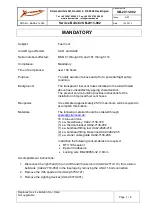
EVEKTOR-AEROTECHNIK a.s.
Tel.: +420 572 537 111
Fax: +420 575 537 910
e-mail: [email protected]
Letecká 1384
686 04 Kunovice
CZECH REPUBLIC
http://
www.evektor.cz
Document No.: S2006FTSUS Revision: -
Date of Issue: 15/01/2006
Page:
0/130
F
F
L
L
I
I
G
G
H
H
T
T
T
T
R
R
A
A
I
I
N
N
I
I
N
N
G
G
S
S
U
U
P
P
P
P
L
L
E
E
M
M
E
E
N
N
T
T
f
f
o
o
r
r
L
L
i
i
g
g
h
h
t
t
S
S
p
p
o
o
r
r
t
t
A
A
i
i
r
r
c
c
r
r
a
a
f
f
t
t





























